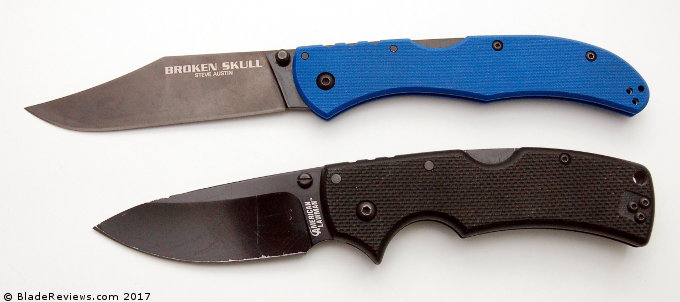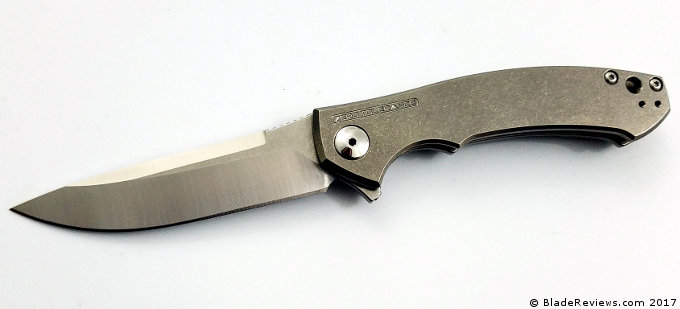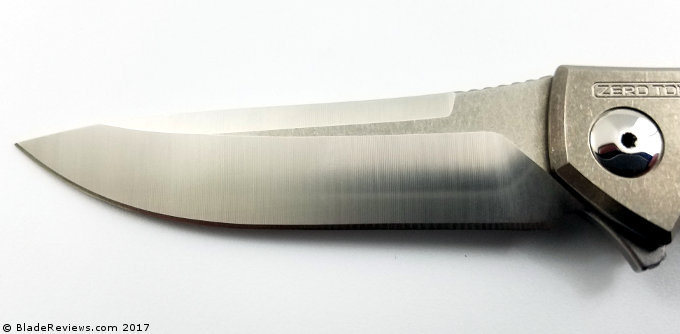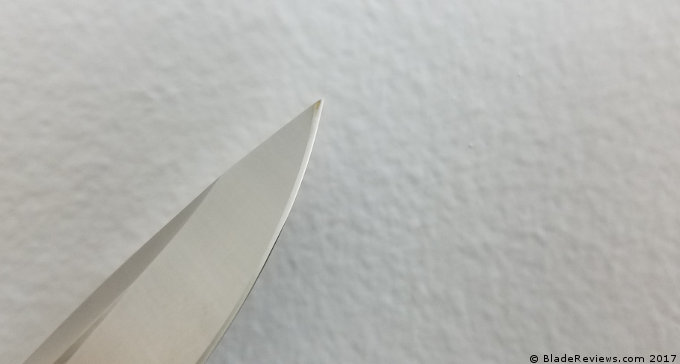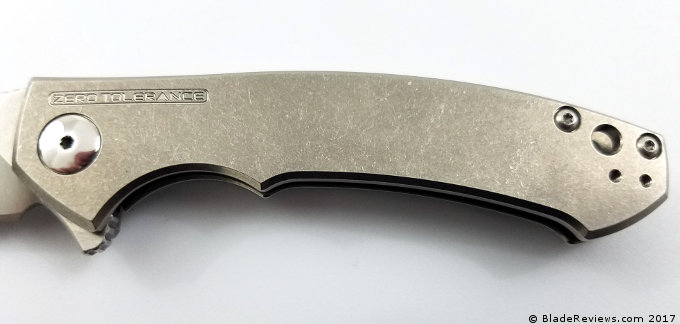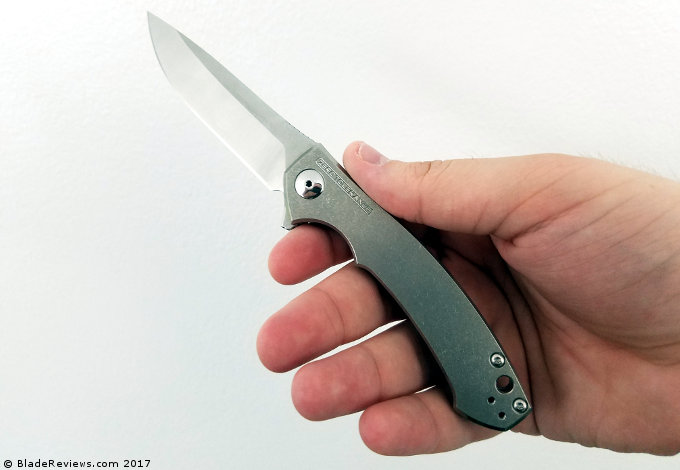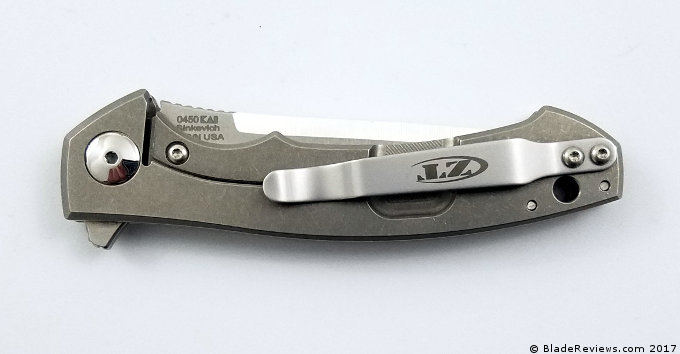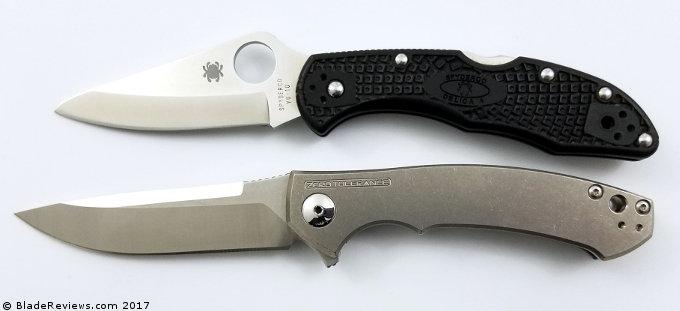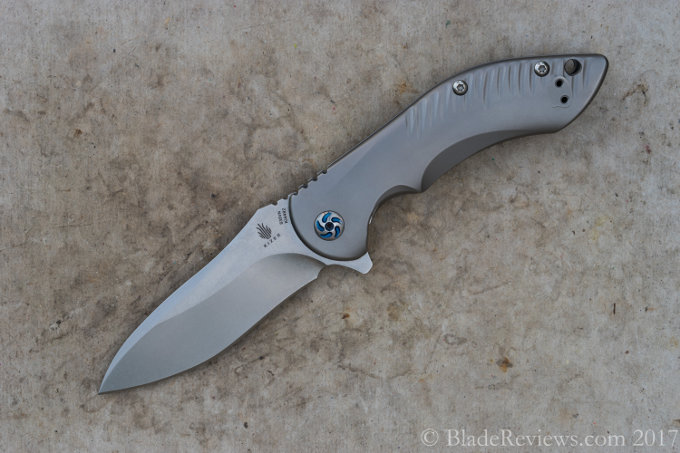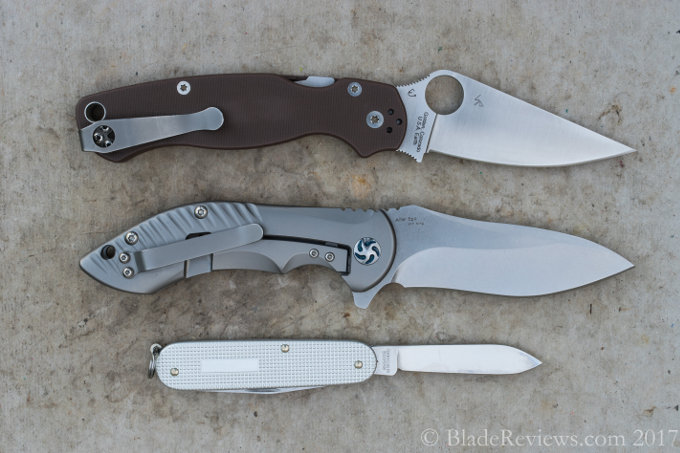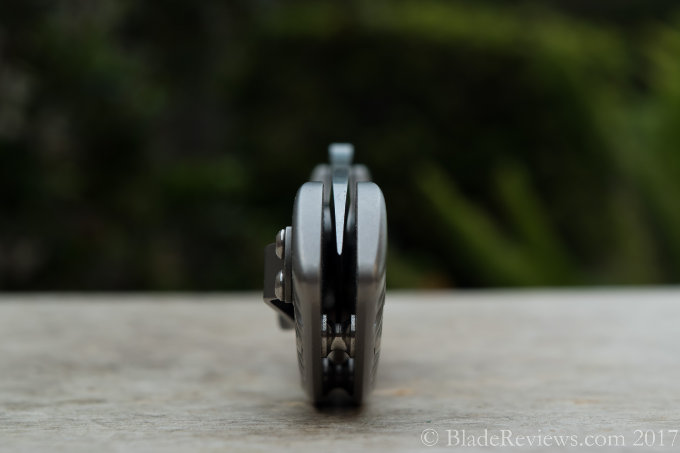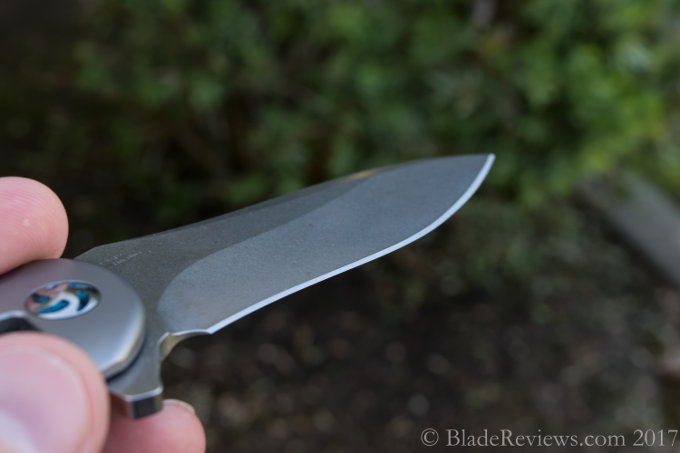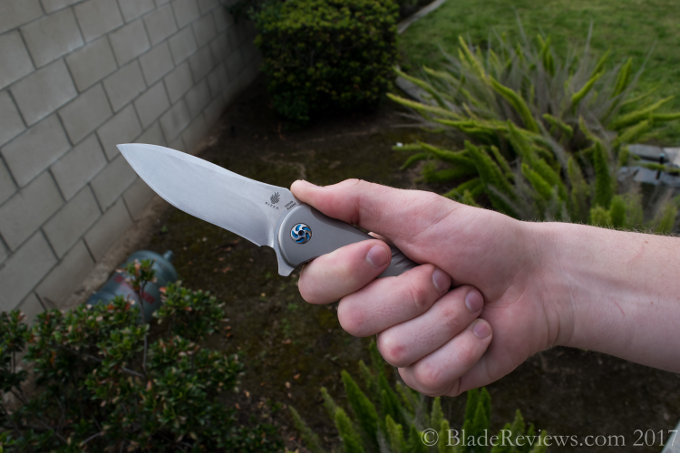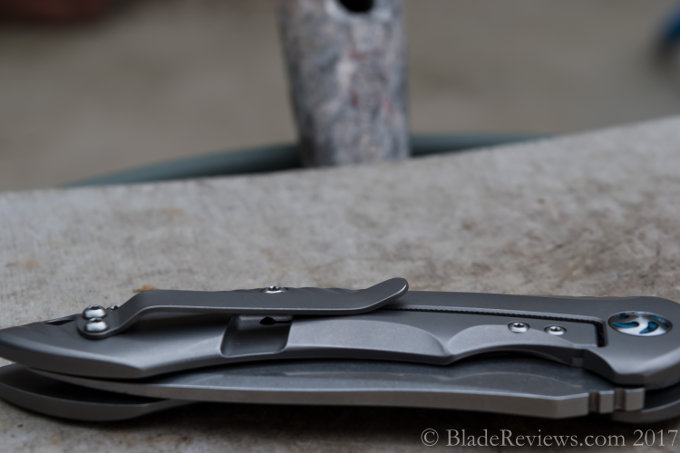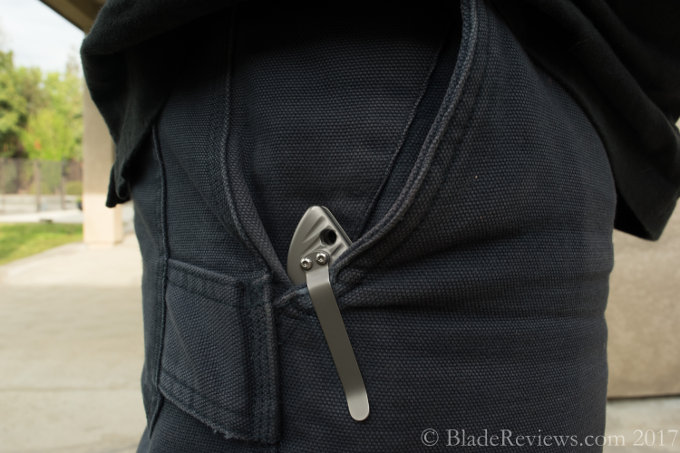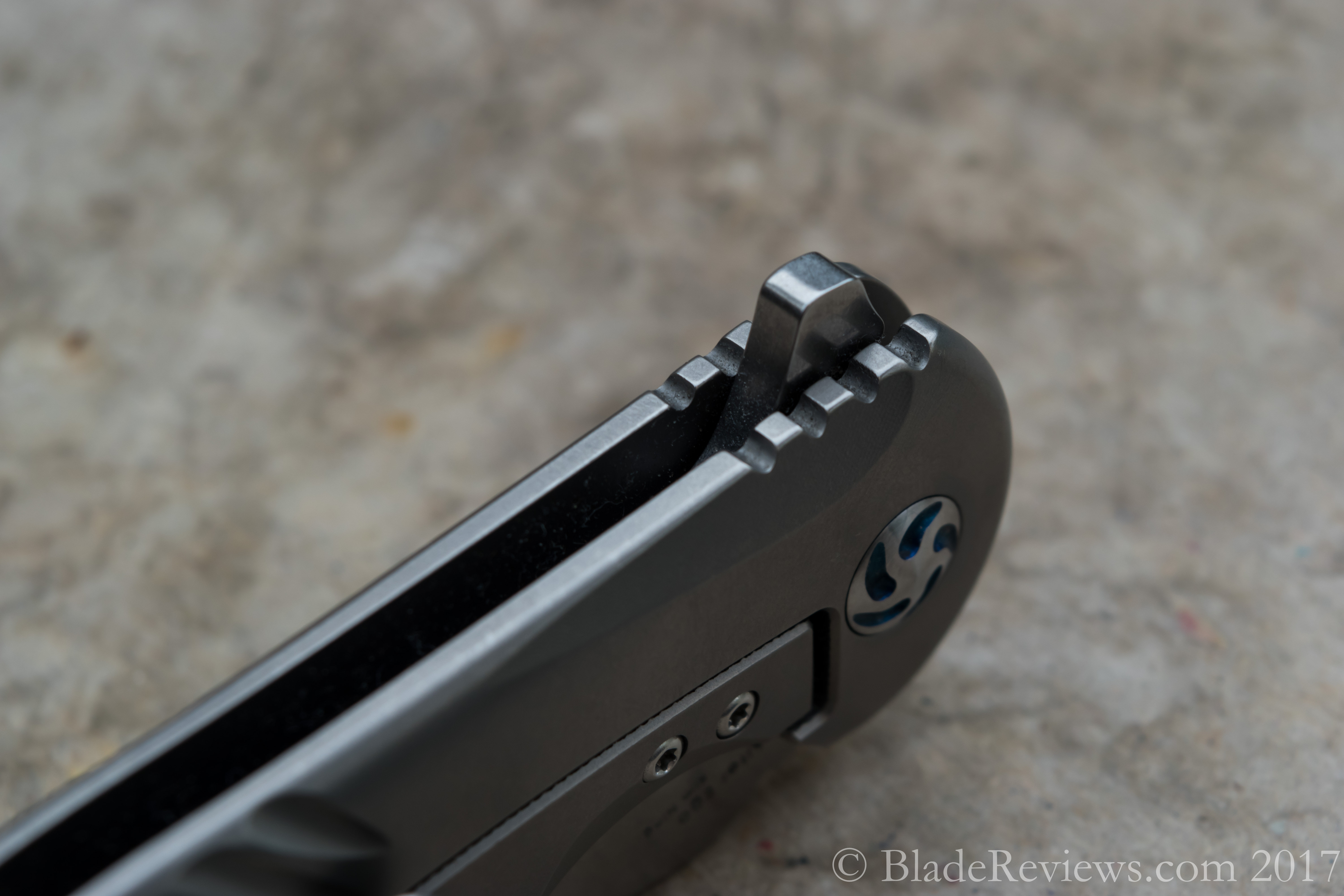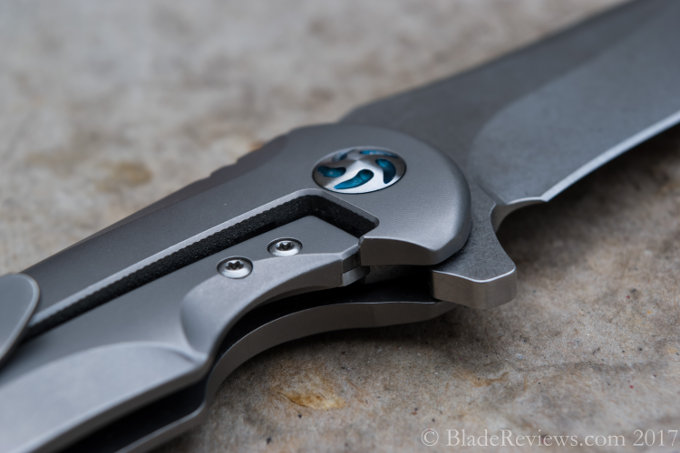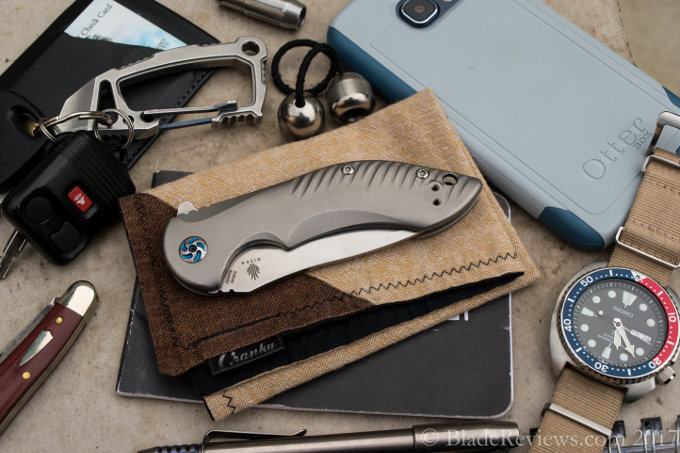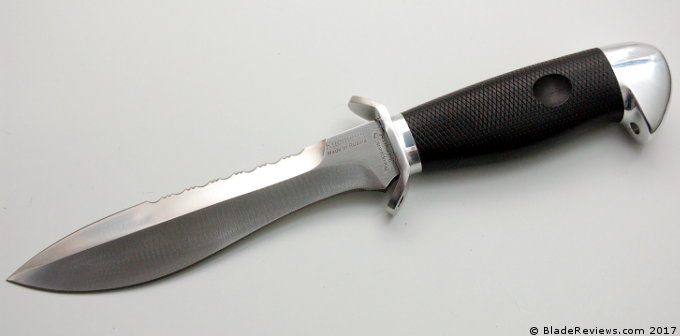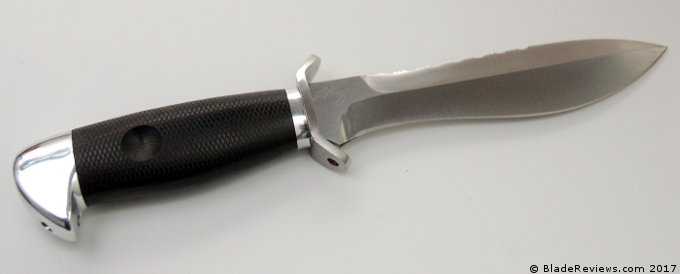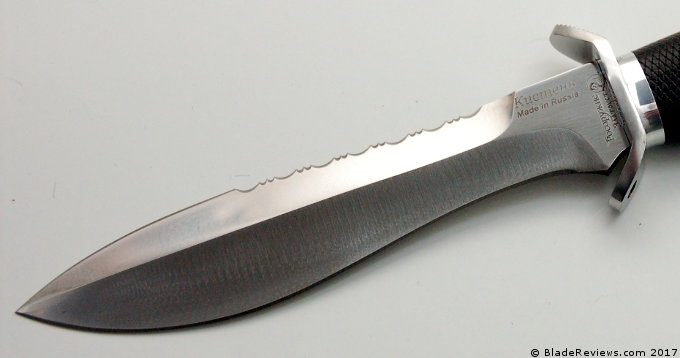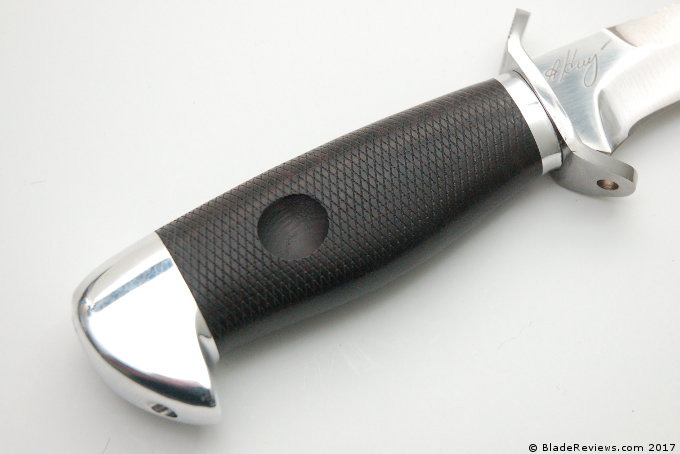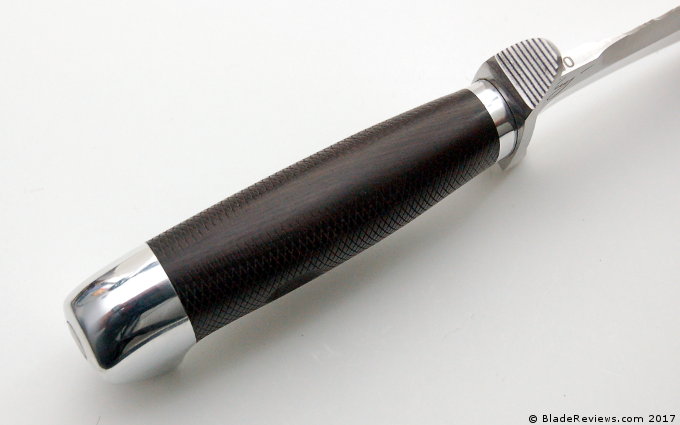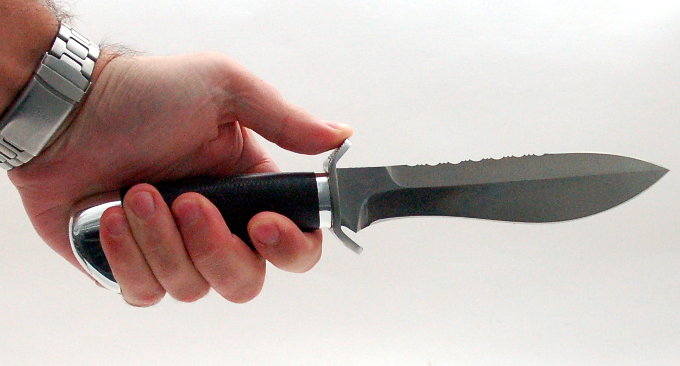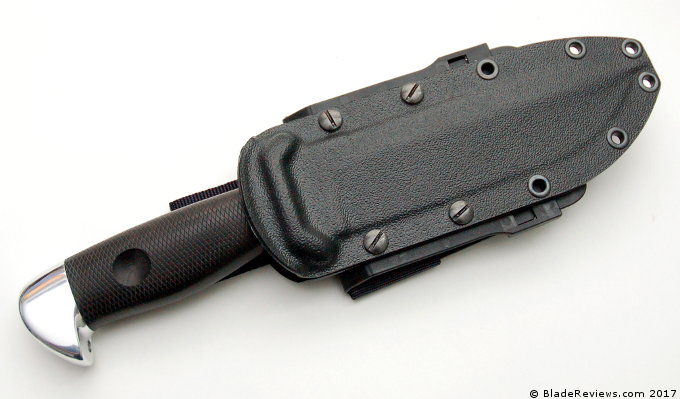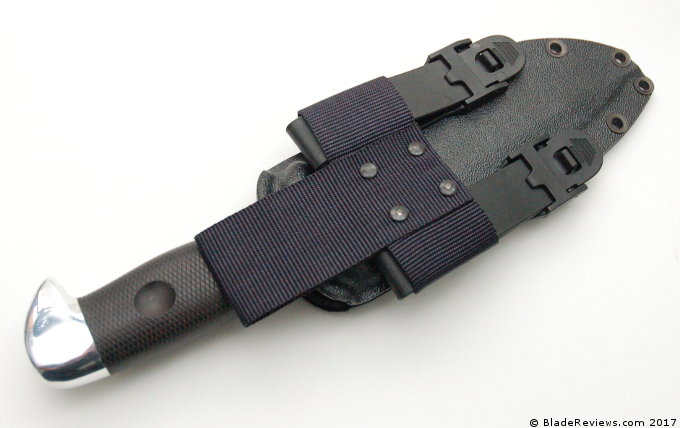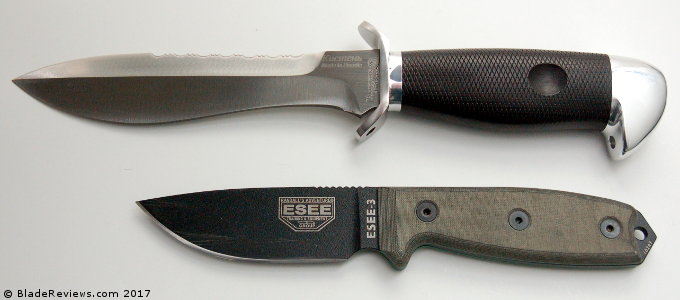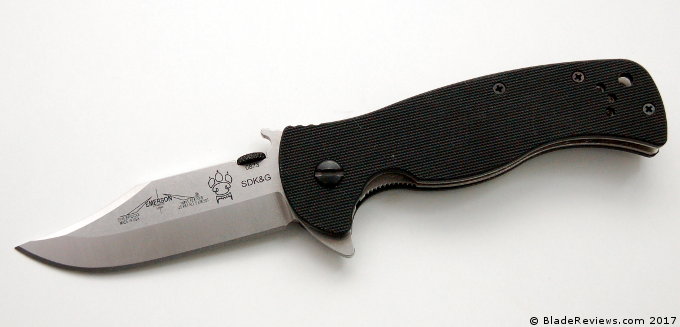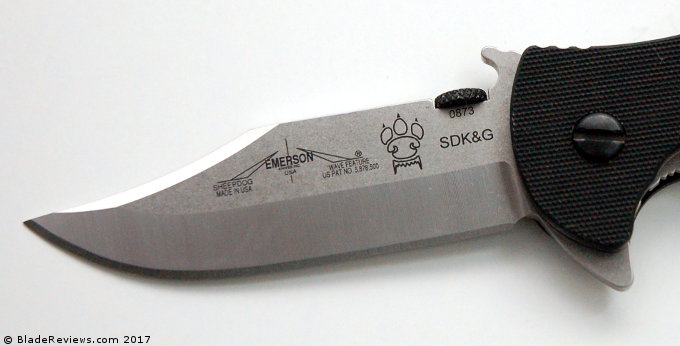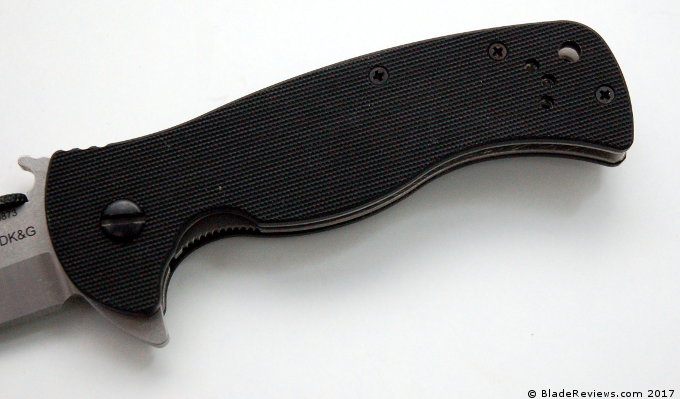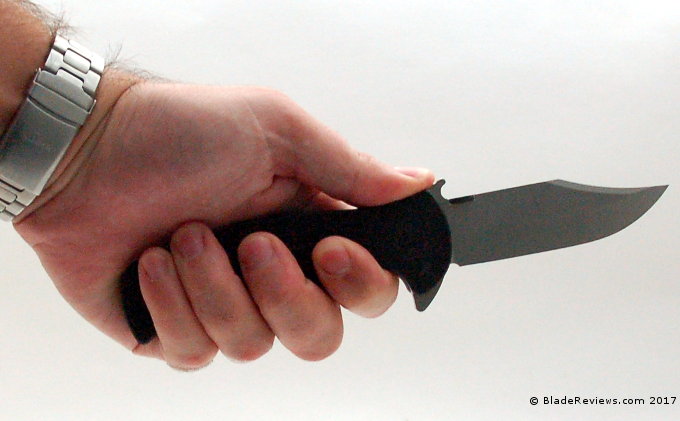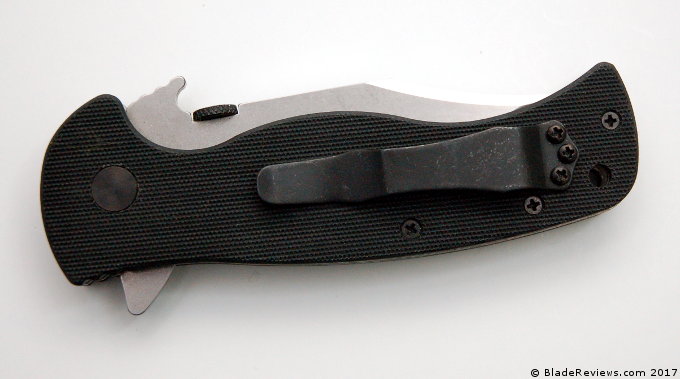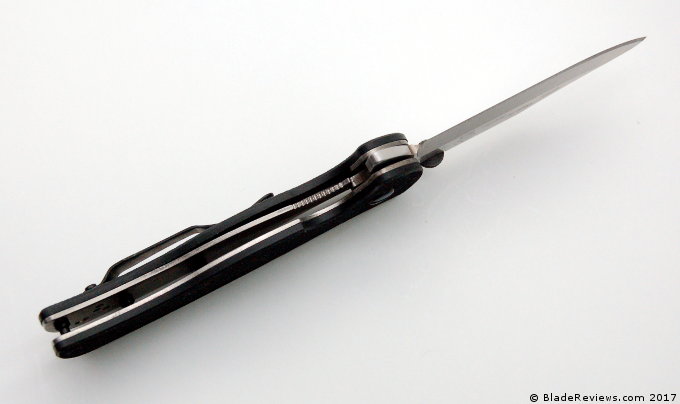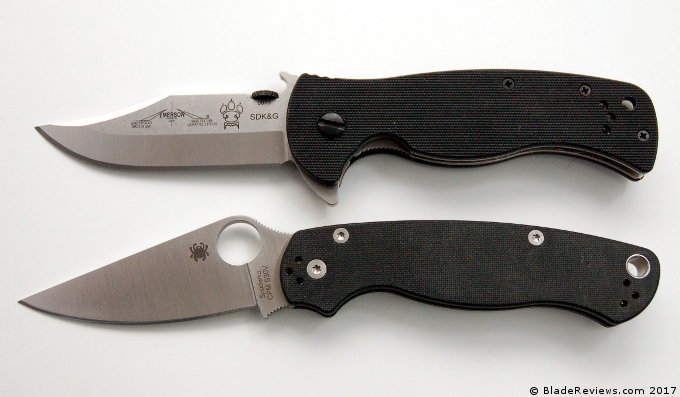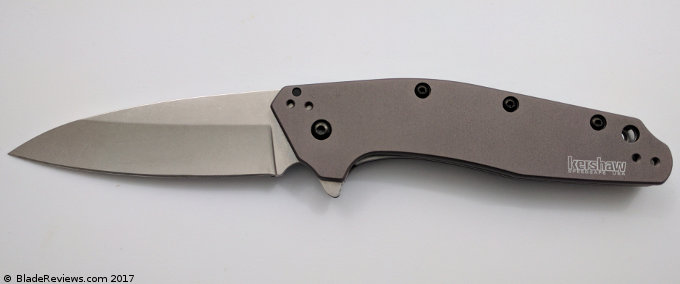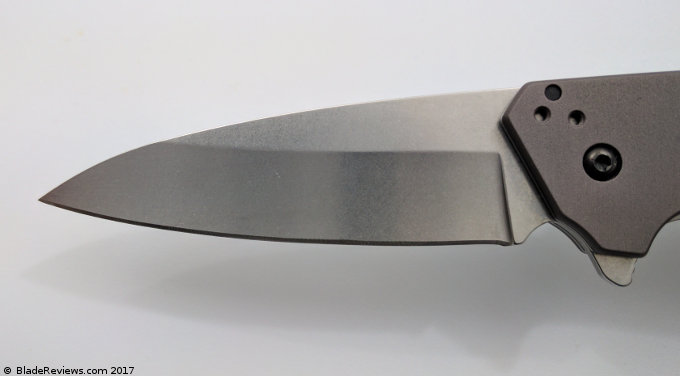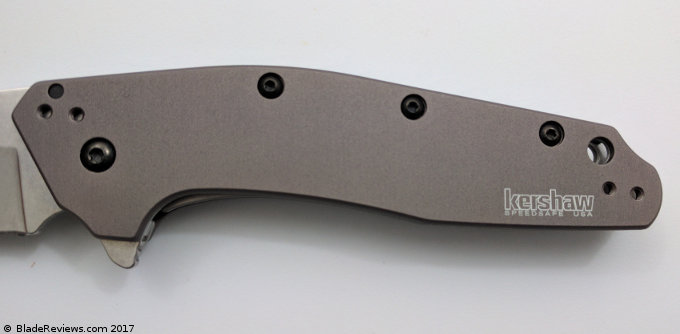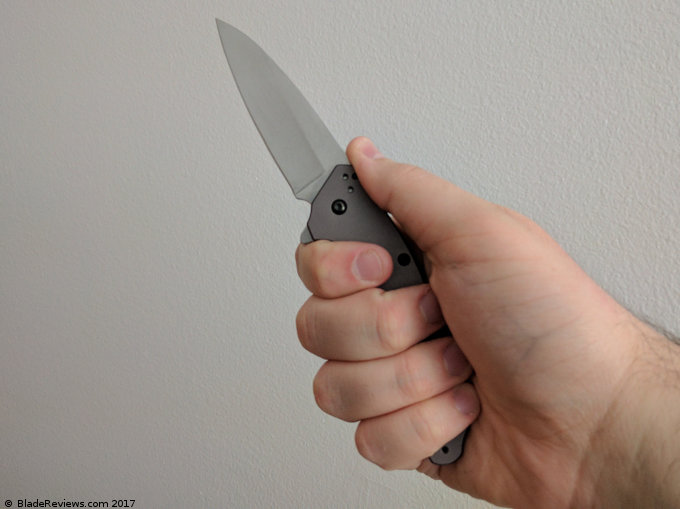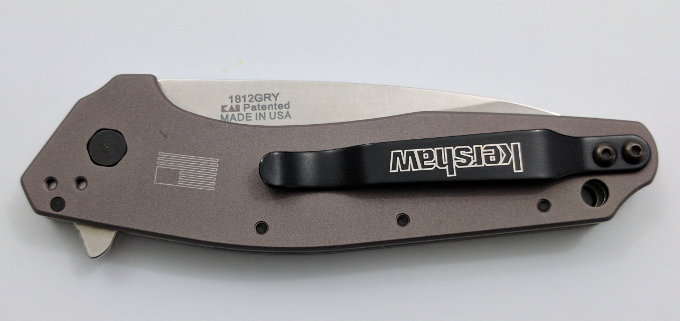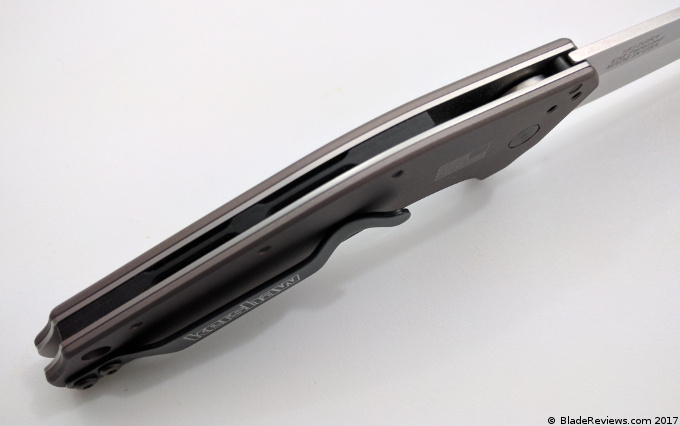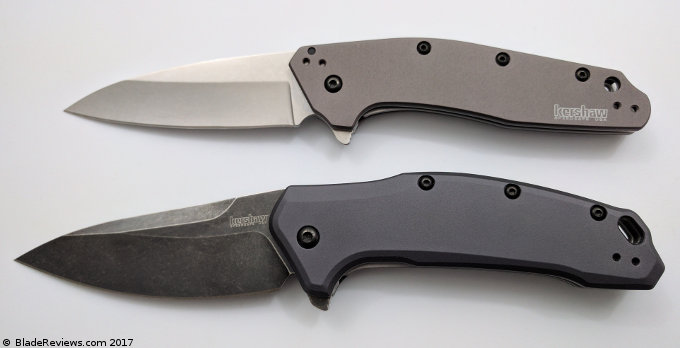I try not to read too much into the name of a knife. After all, the name has no impact on the performance. But sometimes good knives can have bad names. Even after learning that this knife was designed by “Stone Cold” Steve Austin and named after his Broken Skull Ranch, I still thought the Broken Skull was a pretty dumb name for a pocket knife. Hopefully I don’t receive a “Stone Cold Stunner” for writing this.
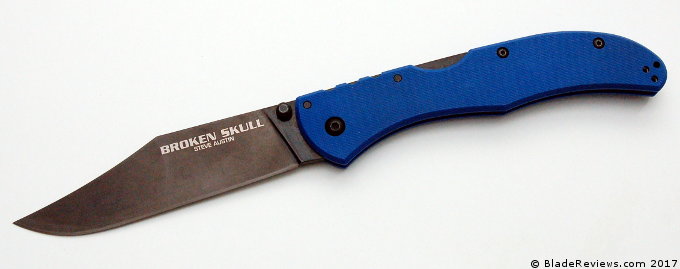
Buy the Cold Steel Broken Skull at BladeHQ
But much in the same way that I am a sucker for Emerson knives, I’m a sucker for these Cold Steel offerings. That is because despite all the theatrics, lawsuits, and marketing bullshit they make some good stuff.
The American Lawman is a perennial EDC favorite of mine, while pieces like the Mini Tuff Lite and Ultimate Warrior Hunter. continue to satisfy in niche situations when I want a small or overbuilt folder. The Broken Skull, even with it’s unfortunate name, struck me as an another imminently useful pocket knife from CS, if on the larger side.
General Dimensions and Blade Details
The Cold Steel Broken Skull has an overall length of 9.25″, a 4.00″ blade, and weighs 3.10 ounces. This knife is made in Taiwan. The Broken Skull reminds me of an Spyderco Endura. My buddy in law school enjoyed his Endura because it was an easy knife to pocket but packed a lot of blade. I think he would enjoy the Broken Skull. It is also thin, light, and packs a big blade, yet this feels like a much stronger knife than the Endura.
While a 4″ blade is probably too big of a knife for most people to EDC, if you enjoy carrying a small and big pocket knife at the same time I could see the Broken Skull being your big knife. Of course if you are a fan of “tactical” folders then the Broken Skull could also be up your alley.
The Broken Skull has a long thin exaggerated clip point blade. This blade provides you with plenty of cutting edge, a little bit of belly, and a fine tip. This blade has a full flat grind, and gets thin behind the edge. A black DLC coating rounds things out.
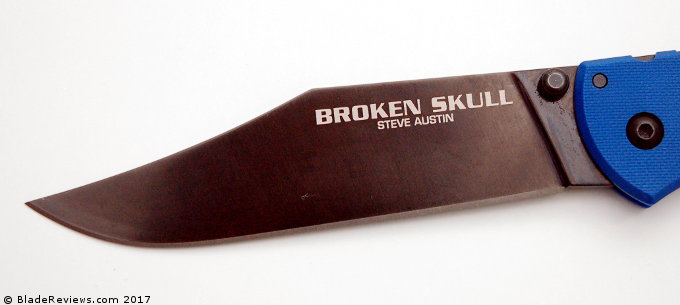
Like all the new higher end Cold Steel folders, this knife comes in CTS-XHP stainless steel. I like CTS-XHP because it holds a good edge and is easy to sharpen. Its a nice step up from the AUS-8 Cold Steel used to run in all their knives, although it does raise the price.
I have used this Broken Skull as an EDC knife, and in that capacity I have opened and broken down many boxes, performed some light food prep, and and have worked with it a fair bit in my back yard. I have found the Broken Skull to be a good slicer. Both the grind and profile are thin and the knife zips through boxes, slices fruit easily, and bites deeply into green wood. The DLC coating has held up excellently with little in the way of visible wear.
This is a useful blade shape with good geometry for slicing, and Cold Steel’s recent switch to CTS-XHP steel with a DLC coating is a significant upgrade over their AUS-8 and teflon coated blades of yore. While the long profile lends the knife to penetrating cuts, you can still get plenty of chores done with the Broken Skull.
Handle, Ergonomics, and Pocket Clip
Much like the American Lawman, the Broken Skull has a linerless G-10 handle with a black aluminum backspacer. What sets the Broken Skull apart is how thin the G10 is. It makes for a slim knife, but the handle is still strong with zero flex in it.
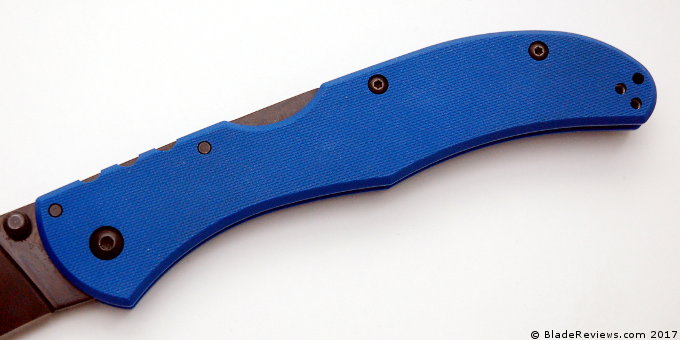
Handle construction is of high quality with counter sunk button screws, chamferred G-10, and all black hardware. Cold Steel offers this model in a variety of handle colors – a nice bonus. The blue version happened to catch my eye but they have everything from standard black to pink.
The long simple handle of the the Broken Skull provides you with plenty of ergonomic options. You can choke up on the knife and make use of the simple jimping on the spine of the G10, or you can pull back on the handle and avail yourself of almost 8″ of reach. Either way the knife feels comfortable and secure. The texture of the G10 is relatively mild compared to knives like the American Lawman and Emerson’s offerings. Still, there is plenty of grip here and I don’t think anyone will mistake this for a slippery knife.
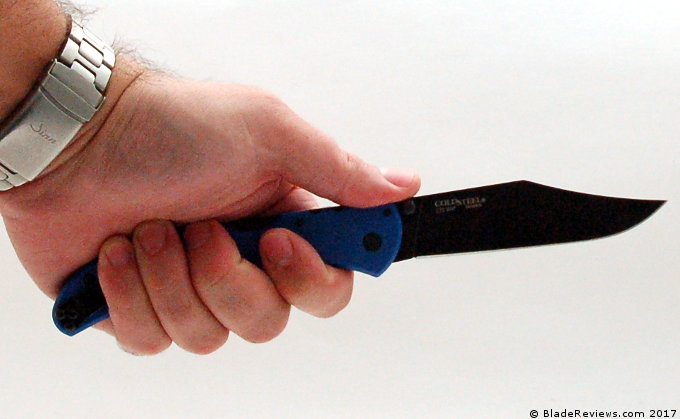
Cold Steel provides you with 2 pocket clips – one for left hand carry and one for right hand carry. The clip is short and strong, and is oriented for deep carry. The combination of the G10 and strong clip make this knife something of a chore to extract and remove from your pocket. It will also shred your pants pockets if you aren’t careful. I’m not wild about the clip for this reason. Too tight, and difficult to use.
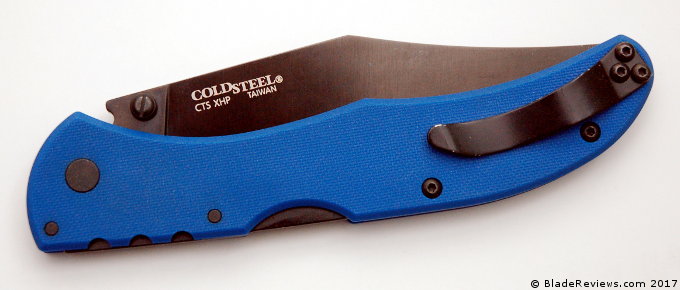
On the flip side, the clip is discrete and it is highly unlikely that the Broken Skull will ever work its way out of the pocket. Because this knife is thin and light it carries well despite being over 5.25″ long when closed.
Deployment and Lockup
Like most of Cold Steel’s folding knife offerings, the Broken Skull comes with their asymmetrical slotted thumb studs. They work to manipulate the blade open, but this is not a knife you will be able to flick open easily thanks to the strong backspring. It’s best to roll the blade open with your thumb. The action is smooth thanks in part to phosphor bronze washers, and once you get past the halfway point, the knife snaps open.
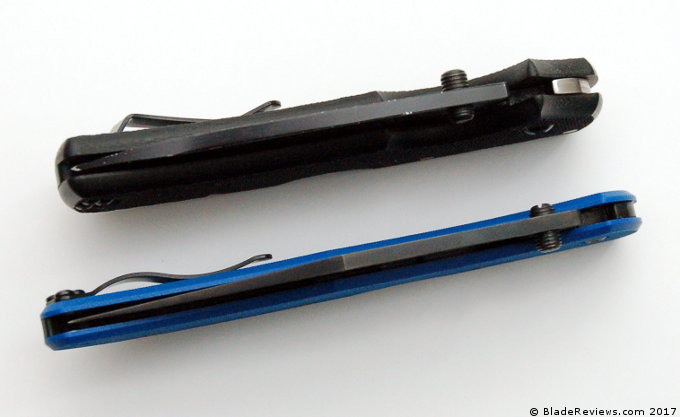
For lockup we have the Tri-Ad lock. The Tri-Ad lock has become a staple for Cold Steel, and for good reason. It’s simple, strong, and secure. There is no blade play on my knife, despite it lacking any sort of metal liners, and the G10 being relatively thin. This is even when I try to wiggle the blade from the very tip – quite a feat considering the long blade. Construction is solid and the Tri-Ad lock is robust.
Blade centering is almost perfect on my knife.
Cold Steel Broken Skull Review – Final Thoughts
Nice pocket knife. Dumb name. That is how I feel about the Broken Skull. For normal EDC use the Broken Skull is going to be excessively long, and that is probably my biggest hangup with the knife. But I think people who enjoy carrying a long and slim folding knife will find a lot to like here for around $75. The materials are premium. Construction is simple yet functional. I even like how you have a choice of color for the handles. The Broken Skull is an efficient tool and even with a silly name I can’t help but like it for what it is.
If I could make changes, I find the clip to be too small and stiff, and I’d like to see them offer this knife in a smaller size, but I think the Broken Skull compliments Cold Steel’s catalog. They have plenty of 3-3.5″ folders. This model is a little different and that is not a bad thing.
I recommend the Broken Skull to those seeking a long slim folding knife or fans of the design.
- Product Type: Knife
- Package Dimensions: 2.032 L x 4.826 W x 13.97 H (centimeters)
- Country of Origin: Taiwan, Province Of China
- Package Weight: 0.022 kilograms
I recommend buying the Broken Skull at Amazon or BladeHQ. Please consider that purchasing anything through any of the links on this website helps support BladeReviews.com, and keeps the site going. As always, any and all support is greatly appreciated. Thank you very much.
